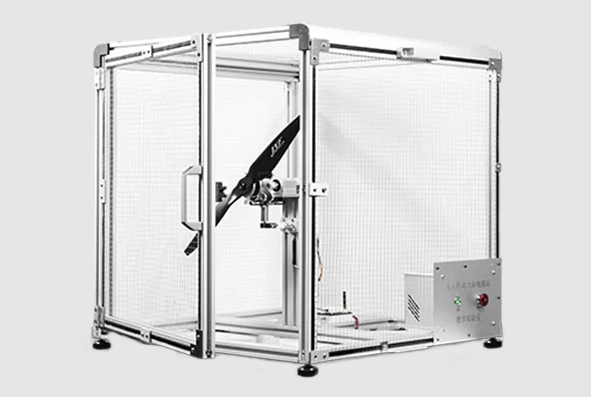How to Test the Motor and Propeller?
- 2 mar, 2023
- 1082 visitas
Motor and propeller test kits are powerful tools for conducting motor and propeller tests.
A motor is an electromagnetic device that converts or transmits electrical energy according to the laws of electromagnetic induction.
A propeller is a device that converts engine rotational power into propulsive force by rotating the propeller blades through air or water. The purpose of a propeller is to convert the engine power transmitted to the propeller through the rotating shaft into quasi-linear thrust as efficiently as possible within the appropriate vehicle speed range.

Why Test Your Motors and Propellers?
You must first ask yourself, what are your or your end user's needs? This question is important because it will help you understand which parameters to optimize.
Do you want to fly longer to capture longer periods of time without interruption?
Do you want to carry a larger payload?
Do you need more thrust and power to go faster, or to improve handling in strong winds?
Do you have overheating issues and your application requires you to minimize failure rates?
The final choice of power system depends not only on the airframe and payload, but also on your application. click here
So What Parameters Should Be Measured?
Motor
To fully characterize the motor, you need to measure the following parameters.
Voltage (V)
Current (A)
Throttle input (%)
Motor Load or Torque (Nm)
Speed (RPM)
The software will automatically calculate the following parameters for you.
Mechanical power (Watts) = Torque (Nm) * Speed (rad/s)
Electrical power (Watts) = Voltage (V) * Current (A)
Motor efficiency = Mechanical power / Electrical power
Propellers
In order to extract useful propeller data, the following parameters need to be measured.
Speed (RPM)
Torque
Thrust
The software calculates the following parameters for you.
Mechanical power (Watts) = Torque (Nm) * Speed (rad/s) ← Same as motor
Propeller efficiency (g/Watts) = thrust (g) / mechanical power (Watts)
Note that the mechanical power of the motor and the propeller are the same. This is because all mechanical power output from the motor goes to the propeller, as it is directly connected to the motor's shaft.
Are you interested in learning more about motor and propeller test kits for sale and how they can benefit you? Contact us today to secure an expert consultation!
- Categoría:
- Negocio
- Sin comentarios



